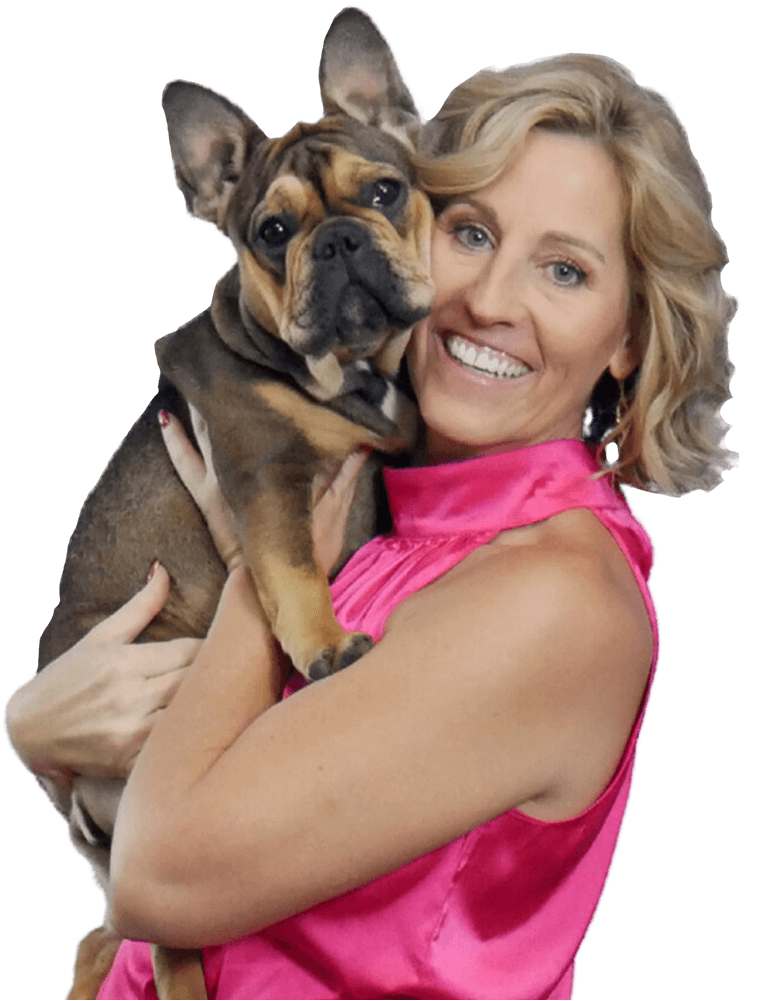Guide to Choosing a Pet Boarding Facility
With Dr. Jenifer Chatfield
Welcome to our digital guide to help you find a boarding faclity that is just as focused on the health and care of your beloved pet as you are. The lives that we lead do not always lend themselves to an exclusive focus on our furry friends – so, all pet parents need to have a place that they trust to care for their dog when they need some pup-free time. When selecting a pet care facility for your precious pup, it is important that you be able to answer some key questions to ensure that the facility is providing the safest, healthiest, and best experience possible for your doggo!
The Most Important Considerations:

Dr. Jenifer Chatfield is a double-boarded veterinary specialist with a passion for sharing her love of the animal world with others through edu-tainment on multiple platforms and now she’s ready to help you look for the best care facility and share her 23 years of experience.
1. Communication
The pet care and support triangle is made up of veterinarians, pet care facilities, and the pet parent. Next to pet parents, pet care professionals at boarding sites, doggie day cares, and groomers spend the most time with your dog. So, it is crucial that these folks are professionally trained to care for your dog and provide consistent and accurate communication to not only the pet parent but also veterinary professionals.
Integrated Communication
A robust relationship with a veterinarian and timely communication with your dog’s veterinary care team can significantly impact your dog’s health longevity. For example, recognizing an itchy ear or a small lump at doggie daycare, and groomers, can mean avoiding months or years of health complications for your dog. A healthy and robust relationship with the veterinary community will include regular communication between veterinarians and the pet care facility.
Evaluations & Health Assessments
High-level facilities will provide at least a cursory evaluation or health assessment of dogs upon entry – every time. Even dogs that are boarded infrequently, or come every day for doggie day care, should be getting a good physical assessment by professionally trained staff each time they enter the facility. If staff identify something abnormal, the facility should not only notify you, the pet parent, but the veterinarian of record for your dog should also receive some communication. Consistent routine communication between the pet care professionals and the veterinary staff truly elevates the level of care for your dog and this relationship should be a key feature when selecting a pet care facility.
No one likes to think about medical emergencies happening with their pet when they are out of town, but your pet care facility should have emergency response plans in place. Fire extinguishers, fire alarms, and smoke alarms are a bare minimum. Whether it’s via remote cameras monitored by personnel or actual overnight staff, facilities should have 24-hour monitoring of pets in their care. Because minutes count in a pet care emergency, pet care professionals need to be professionally trained in how to respond – including how to administer CPR.
Important Questions
- How quickly will I be notified if something happens with my dog?
- Does the pet care facility have an established relationship with a veterinarian?
- Will they speak regularly with YOUR veterinarian and do they ask for your veterinarian’s contact info on your pet’s first visit?
- Are staff physically present overnight at the facility?
- Does the pet care facility have professionally trained staff?
- Are the staff all certified in pet CPR?
2. Disease Prevention
How the best pet care facilities keep disease out
While it stands to reason that dogs going to pet care facilities are at higher risk for disease than dogs that never see another dog, pet care facilities can, and should, take steps to radically decrease disease transmission among the dogs in their care. The number one way to stop disease transmission among dogs is vaccination. A pet care facility should work with a veterinarian, preferably a veterinarian board certified in preventive medicine, to
establish minimum requirements for all dogs entering the facility. Additionally, a pet care facility should require parasite prevention for all dogs entering as many dog parasites are transmitted in the environment through contaminated soil. It is crucial to understand how and if a facility will “waive” these life-saving requirements under any circumstances. Waiving these requirements for even a single day for a single dog puts YOUR dog at risk and should be avoided.
Does your facility understand pet vaccines?
A key factor is also understanding the importance of HOW vaccines are administered and assuring that a facility is vigilant about it as well. Mucosal vaccines, those vaccines given orally or intranasally, should be required by pet care facilities because they prevent even mild symptoms of upper respiratory disease in dogs and prevent the majority of shedding of common respiratory pathogens. It’s also important that a facility require a mucosal vaccination against canine parainfluenza (CPiV). CPiV is the common denominator in most canine upper respiratory infections and a key factor in those producing the most severe clinical disease.
A mucosal vaccination against CPiV can help prevent co-infections with other pathogens like Mycoplasma sp. and Bordetella sp. and should be required by a facility. It’s true that no one wants to think about their dog getting sick while boarding, but it does happen! It’s important for pet parents to know what steps a pet care facility will take if their dog should need veterinary attention while in their care. Any dog that gets sick should be isolated from all others, a pet parent contacted immediately and the veterinarian notified. If life-threatening circumstances develop, facility personnel should be willing and able to transport the pet to the nearest available veterinary hospital for care.
How clean is your pet care facility?
Pet parents need to be confident that a pet care facility performs routine and cleaning and disinfection procedures and are using cleaning and disinfection supplies that are safe and effective. It’s important that a facility uses sanitation supplies safely and effectively to prevent disease transmission while dogs are in their care. Any fecal material and urine should be immediately cleaned and then the area disinfected appropriately.
It’s important that outside play areas and yards are also promptly cleaned and disinfected daily. One obvious way to evaluate a facility’s cleaning and disinfection protocols is to visit. A good, clean facility should have a neutral odor. Some sanitation supplies, such as bleach, may be very effective against bacteria, viruses, and fungi, but their odor can be toxic to dogs. The lobby and kennel areas should not have strong chemical odors that can irritate your
dog and may even be toxic to them. A good facility will employ disinfectants that are proven effective against bacteria and viruses, including the naked viruses such as parvo. All kennels and caging should be cleaned and disinfected daily at a minimum.
Certainly, spot cleaning throughout the day should be done promptly if a dog has an accident in the kennel as well. Disinfectants should never be used in a cage while a dog is in the cage. Food and water bowls should be washed and disinfected at least daily and certainly not shared by multiple dogs from different households. Dog food and treats should be stored safely and in sealed containers. Canned food should be refrigerated once opened and marked with an expiration date.
Minimum standard vaccine requirements
- Distemper annually or every 3 years
- Parvo annually or every 3 years
- Hepatitis (Adenovirus) annually or every 3 years
- Parainfluenza (CPiV) intranasally or orally every 6 months or annually
- Rabies annually or every 3 years
- Leptospirosis annually
- Canine influenza annually
Important Questions
- What vaccines are required for dogs to enter the facility?
- Are mucosal vaccines against upper respiratory infections required?
- Is canine influenza vaccination required?
- Are parasiticides required?
- What is the facility’s cleaning and disinfection protocol?
3. Behavior
Play
Nearly 40% of dogs might actually be introverts! While play groups might be good for some dogs, they might also be miserable for your dog. A pet care facility should assess your dog individually and offer customized options based on your dog’s temperament. For example, a toy-obsessed dog might not care about large play groups because toys are not allowed. That dog might really prefer some individual play with a handler and some toys.
Rest
It’s also important that your dog have some time to rest during the day. Nap time or cage rest is just as critical as play time for your dog’s mental health. If a facility demands that all dogs be in group play at all times, it may not be the right facility for your dog. Your dog has a social battery just like you do! It is important that your dog be in the care of professionally-trained personnel who understand that dogs do not love all dogs ALL the time and afford your dog the opportunity to recharge their social battery with some independent play or individual rest or time outs.
Understanding your pet’s social behavior and needs
Look for a facility that understands dogs’ social behavior and tailors activity schedules for your dog. Be sure to find out how a facility creates play groups and how long the group activities last. While size does matter, physical size and body weight are not the only critical criteria necessary for play group selection at a pet care facility. A dog’s temperament and daily disposition should be considered. Independent play with a handler should not be approached as a punitive measure – for some dogs, independent play is less stressful than large multi-dog playgroups. Professionals at pet care facilities should be open to adapting to your dog’s social needs at each visit. Staff should be professionally trained to recognize dogs’ social cues in play groups. Ear position, tail activity, and vocalization can all indicate when a dog has had enough and needs a time out from other dogs.
Staff should recognize pet body language
A facility should have staff that are empowered to remove dogs demonstrating stressful behavior to avoid fights and injuries. Play groups for dogs can be great mental and physical stimulation for the dogs, but a facility should provide enough staff to supervise the dogs and intervene as necessary. For example, a good ratio for large breed dogs in play groups is 1 staff member for every 12-15 dogs. Small breed dogs can have a slightly higher ratio of 1 staff member for every 25-30 dogs.
Again, it is important to ask what procedures are followed if your dog gets injured in a play group. Just like kids, dogs can play hard with each other and sometimes get a sore foot, leg, etc. If that happens, the dog should be removed from the play group and allowed the opportunity to rest in their kennel for the rest of the day. The facility should also let the pet parent know what happened so that the dog can take it easy at home as well. If a dog is injured more significantly, then the facility should take action by notifying the pet parent and seeking veterinary care immediately if appropriate. Good pet care facilities should have these procedures in place and be able to share them with pet parents.

Important Questions
- What play groups are available?
- How is my dog evaluated for group activities?
- What happens if/when a dog displays aggressive behavior?
- How are dogs selected for groups?
- What independent play options are available for my dog?
- What happens if a dog gets stressed in a play group?
4. Enrichment & Mental Stimulation
Why does your pet need enrichment?
Environmental enrichment has become such a buzz phrase among pet parents lately that it makes sense to understand what it is (and what isn’t) and why it is important that a pet care facility integrate the concept into your dog’s care. Environmental or behavioral enrichment is the process of manipulating an animal’s environment to increase physical activity & normal species typical behavior. The application of enrichment in a pet care facility is actually a multifactorial process. An enrichment program can be as simple as some inanimate enrichment where toys or furniture are added to a play yard or kennel for a dog to use. Animated enrichment involves a more labor-intensive approach wherein dogs are engaged in physical activities with handlers or other dogs, as in play groups. Yet another category of enrichment targets mental stimulation and includes novel smells and sounds for your dog to consider. For dogs that must be kept separate from all other dogs in a pet care facility due to medical or social restrictions, mental stimulation and inanimate environmental enrichment is a great alternative and can improve that dog’s overall behavior and recovery. It is important that a pet care facility have staff professionally trained in environmental and behavioral enrichment beyond offering lick mats and peanut butter.
Routine Training
Routine training sessions are also a great form of animated environmental enrichment. Even the best-behaved dog can benefit from a session with a trainer every so often to afford the dog the opportunity to engage their brain and practice communication with the trainer. When considering a training program or daily training activities for your dog, avoid programs with negative consequences. For example, your dog should be encouraged to sit when asked by a trainer and rewarded with a high value treat. Trainers should not punish a dog for failing to come when called, sit when asked or for any other reason. Negative reinforcement is an ineffective approach and should not be employed by trainers at pet care facilities.

Important Questions
- What is your environmental enrichment program?
- Does the facility have different enrichment options?
Recap: Your List of Facility Evaluation Questions
Take this list of questions to every facility you visit to help you make the most informed decision for your pup.
Communication
- Does the pet care facility have an established relationship with a veterinarian?
- Will they speak regularly with YOUR veterinarian and you?
- Does the pet care facility have professionally trained staff? Are the staff all certified in pet CPR?
Disease Prevention
- What vaccines are required for dogs to enter the facility?
- Are mucosal vaccines against upper respiratory infections required?
- Is canine influenza vaccination required?
- Are parasiticides required?
- What is the facility’s cleaning and disinfection protocol?
Behavior
- How is my dog’s temperament assessed?
- Is individual play an option?
- Are rest periods scheduled into daily activities?
- What is the staff to pet ratio? What about in play groups?
Enrichment and mental stimulation
- What is your environmental enrichment program?
- Does the facility have different enrichment options?
- Is a trainer on staff and is a training session an option?






